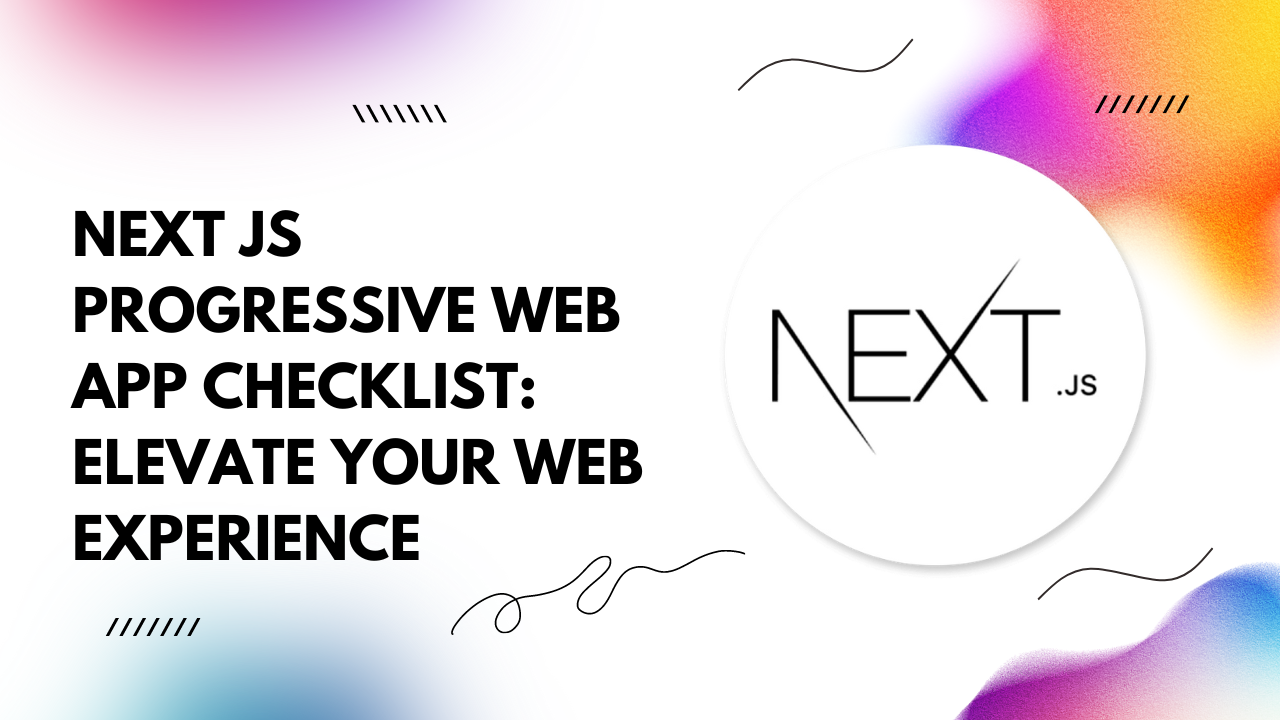Leveraging Next.js, a powerful React framework, empowers developers to craft PWAs that dazzle users across devices. Here's your definitive checklist to ensure your Next.js PWA shines:
1. Start with a Solid Foundation
Begin by initializing a new Next.js project. Use the following command:npx create-next-app@latest my-pwa
2. Manifest Your Vision with Web Manifest
Create a `manifest.json` file in the `public` directory. Define essential PWA metadata like `name`, `short_name`, `icons`, and `theme_color`. This enables users to install your PWA on their devices.
{
"name": "My Awesome PWA",
"short_name": "My PWA",
"icons": [
{
"src": "/icon.png",
"sizes": "192x192",
"type": "image/png"
}
],
"theme_color": "#ffffff"
}
3. Service Worker Magic
Implement a service worker to enable offline capabilities and caching. Create a `service-worker.js` file in the `public` directory.
self.addEventListener('fetch', (event) => {
event.respondWith(
caches.open('my-cache').then((cache) => {
return cache.match(event.request).then((response) => {
return response || fetch(event.request).then((response) => {
cache.put(event.request, response.clone());
return response;
});
});
})
);
});
4. Responsive Design for All Screens
Leverage Next.js's built-in support for responsive design using CSS media queries or frameworks like Bootstrap or Tailwind CSS. Ensure your PWA looks stunning on every device.5. Optimize Performance
Utilize Next.js's automatic code splitting and static site generation to optimize performance. Minify CSS and JavaScript files, and compress images to reduce load times.6. Enable Push Notifications
Integrate push notifications to engage users even when they're not actively using your PWA. Utilize libraries like `web-push` for backend integration and `workbox` for frontend handling.7. Ensure Accessibility
Guarantee your PWA is accessible to all users, regardless of ability. Utilize semantic HTML, ARIA attributes, and conduct thorough accessibility testing using tools like Lighthouse.8. Secure Your PWA
Implement HTTPS to ensure data integrity and protect user privacy. Secure sensitive data and endpoints, and regularly update dependencies to mitigate security risks.Conclusion
By following this comprehensive Next.js PWA checklist, you're poised to deliver an unparalleled web experience. Elevate your PWA with offline capabilities, engaging push notifications, and optimal performance. Stay user-focused and continually iterate to meet evolving user expectations.Implement these steps, and watch your Next.js PWA soar to new heights of success!
Remember, consistency in SEO strategies like using relevant keywords, providing high-quality content, and optimizing meta tags can further enhance the visibility and reach of your Next.js PWA. Happy coding!
